The Luttazzi Studio at the State Library of Trieste: a space to learn about Lelio Luttazzi
A space to remember one of the main personalities of 20th century Italian entertainment, namely Lelio Luttazzi (Trieste, 1923 - 2010): this is the Spazio Luttazzi, which the State Library “Stelio Crise” of Trieste opened in 2015 and dedicated to the memory of the master, and which was conceived following the donation, strongly desired by his wife Rossana Moretti Lut tazzi and the Lelio Luttazzi Foundation, of the documentary heritage that testifies to the life and activity of the great musician, director and showman. The agreement between the General Directorate of Libraries of the then Ministry of Cultural Heritage and Activities and the Foundation took place in 2011: since then, work has begun at the Trieste library to establish a permanent path, open to the public, that would allow people to take a journey through Lelio Luttazzi’s career and activities, to learn about the many pieces of music he composed, and to have an overview of his shows, which have made the history of Italy’s culture and customs.
Lelio Luttazzi was born in Trieste in 1923 to Mario Luttazzi and Sidonia Semani: orphaned by his father when he was only three years old, in 1929 he moved with his mother to Prosecco, and there he took his first piano lessons from the local parish priest, Don Crisman. Back in Trieste, he enrolled in the Liceo Petrarca and became friends with Sergio Fonda Savio, a nephew of Italo Svevo.After finishing school, he enrolled in law school, but his ambition was to be a musician: he founded a band, I gatti selvatici, in which he played the piano.In 1943 he was noticed by one of the hottest singers of the time, Ernesto Bonino, for whom Luttazzi’s group had opened a concert at Trieste’s Teatro Rossetti. Bonino asked him to compose a song for him, and Luttazzi responded with Il giovanotto matto, which became a major Bonino hit. The song earned him the considerable sum of 350,000 liras (about twenty thousand euros today), which convinced him to become a professional musician. He therefore moved in 1948 to Milan where he worked with Teddy Reno, and in the same year he married Magda Pendini (from whom he would separate in 1963). In 1950, after composing more hit songs, he moved to Turin where he became conductor of the RAI orchestra, and in 1954 he moved back to Turin, where he would also begin his career in radio and television, but continuing to be a conductor and songwriter as well.

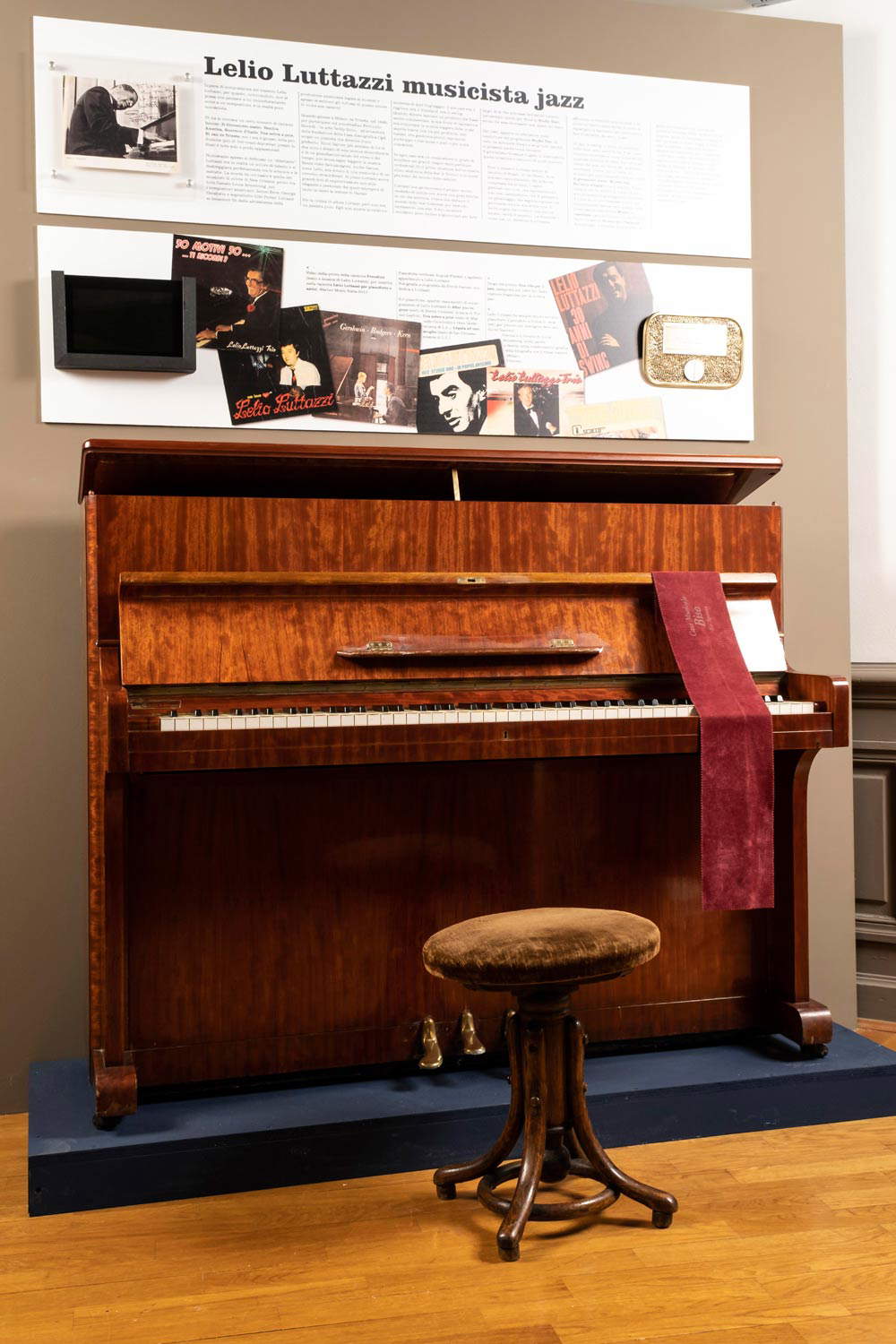
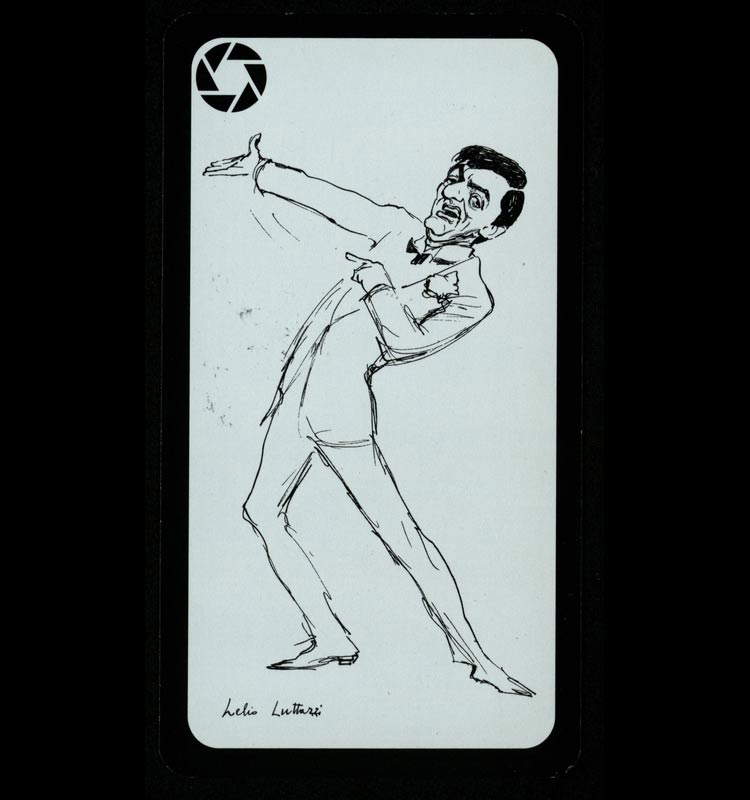
Success came in the mid-1950s: he conducted the studio orchestra of the radio program Il motivo in maschera hosted by Mike Bongiorno, wrote songs for the Quartetto Cetra, for Mina, for Sophia Loren, as well as for himself, and made his TV debut in 1955, as conductor of the variety show Musica in vacanza. In the 1960s his career has another transformation and Luttazzi becomes a TV presenter: his debut is with the program Il paroliere, questo sconosciuto, where he is joined by Raffaella Carrà. However, he continues to work in radio, presenting Studio Uno with Mina, and as a musical author, so much so that he goes so far as to write a song for the 1964 Sanremo Festival. He also finds himself acting: in fact, he is an actor in Michelangelo Antonioni ’s L’ avventura and Dino Risi’s L’ombrellone . In 1967 comes what probably becomes his most famous program, Hit parade, of which he is host until 1976. Meanwhile he continues to take part in other important radio programs such as Rosso e nero, Music Hall, Nostalgia del jazz, Programmissimo, Gran Varietà, Trent’anni di swing and many others. He also writes film scores in the meantime.
In 1970, due to a resounding miscarriage of justice, he was arrested for dealing drugs: released after twenty-seven days cleared of all charges, he began to host again, although in the meantime he had lost the hosting of Hit parade, which he later managed to regain the following year and held until the broadcast was closed. Meanwhile, he continued his acting career and in 1979 he married in second marriage Rossana Moretti, whom he had met in 1975 in Rome and from whom he would never again be separated. In the 1980s his radio and television appearances begin to thin out, and there are few activities: the most notable one is the writing of the theme song for Enzo Tortora’s program Cipria , in which he participates as a musician. He will do the same in 1991 for the program Birthday Party on Telemontecarlo, in which he will play in a trio the jazz authors he loves. He retired permanently from the scene in the 2000s, although he would continue to appear as a guest on some television programs. Before he disappeared, on July 8, 2010, in Trieste, Italy, he managed to win the 2009 Music Prize, awarded to him at that year’s Sanremo Festival, and to have one of his songs, The True Story of Noah, participate in the Zecchino d’Oro.
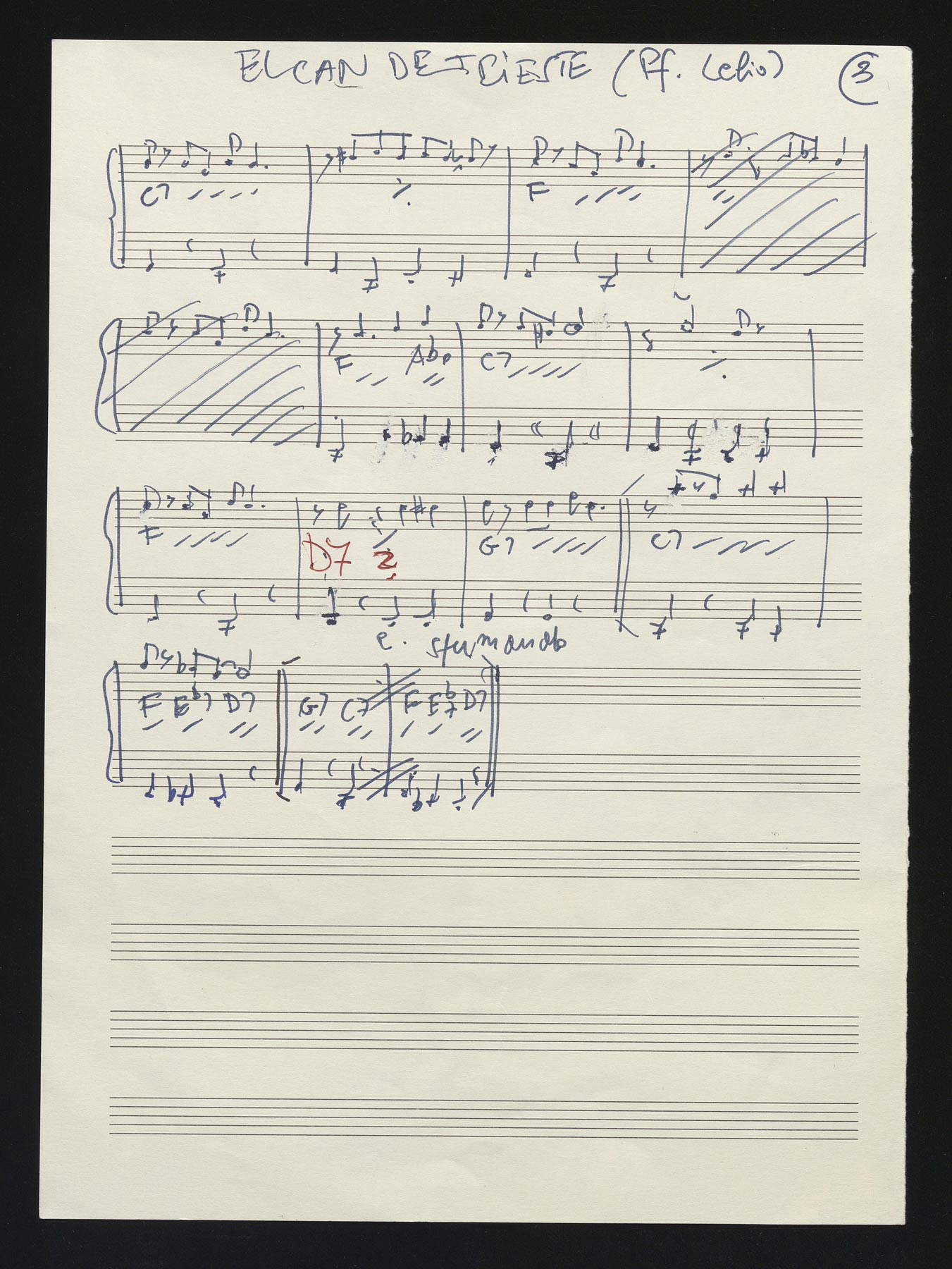
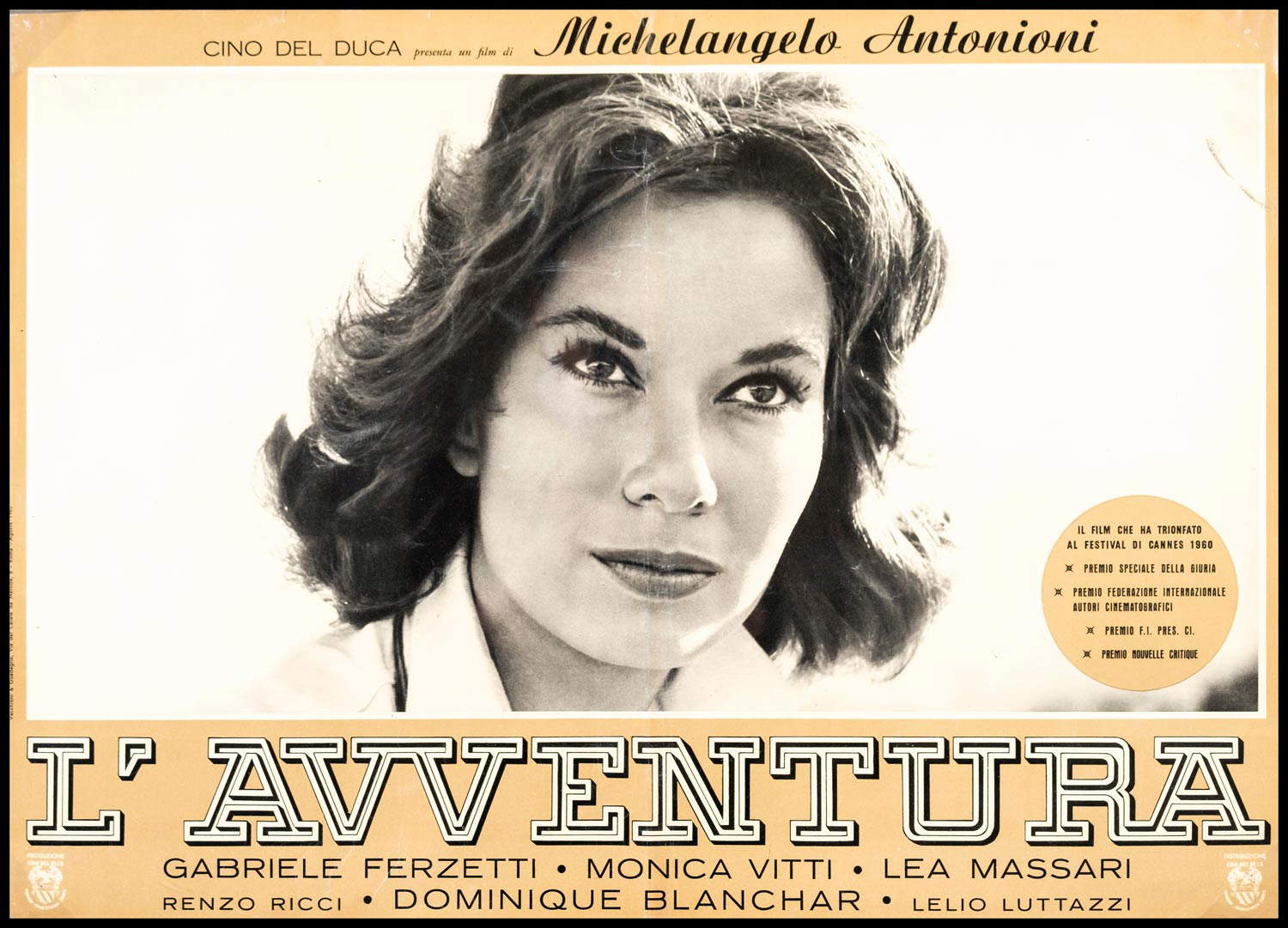

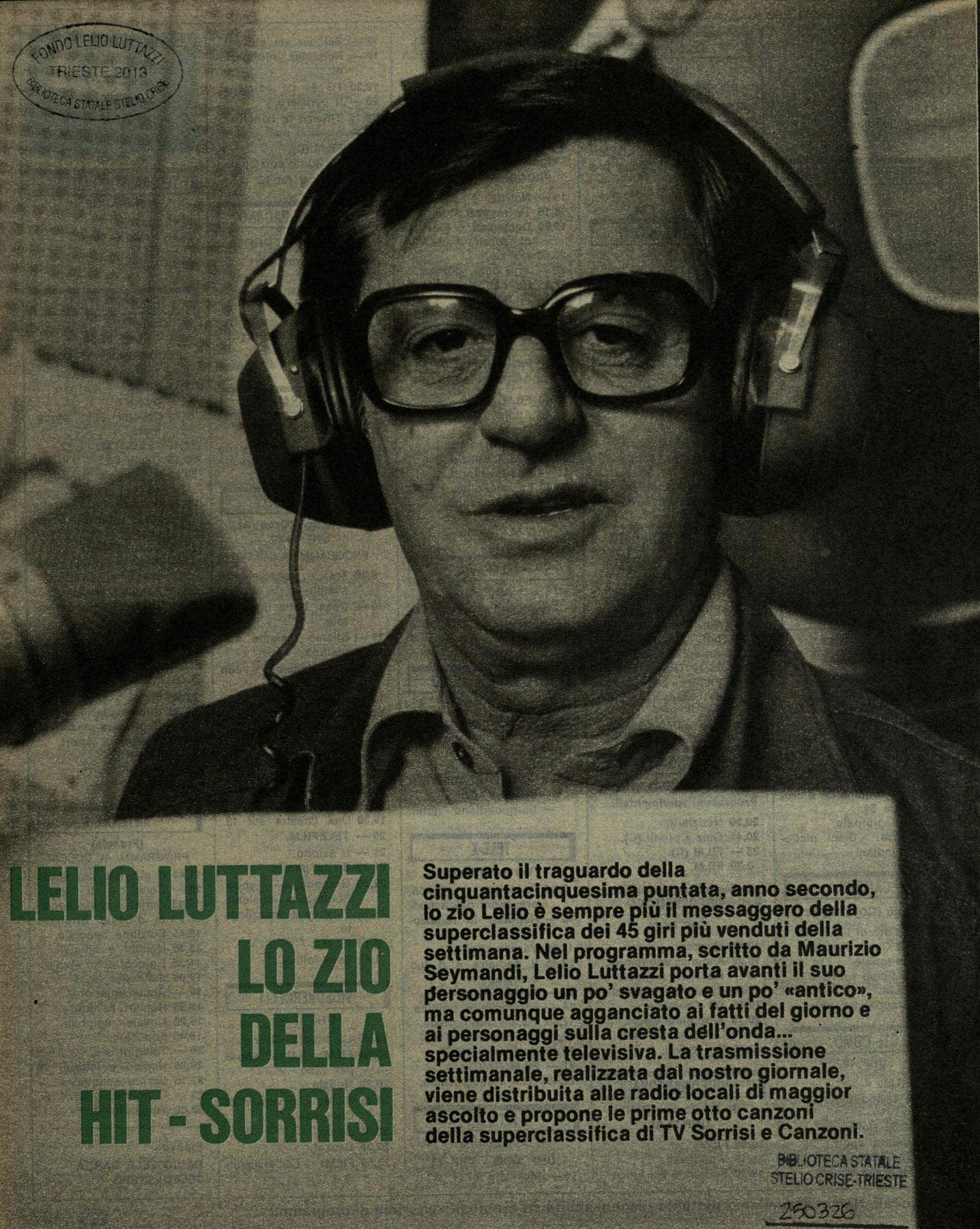
The Trieste Library holds, in the Lelio Luttazzi Fund, manuscripts of songs and film soundtracks, as well as scores, correspondence, records, films, press reviews, photographs and personal items; the latter include the many awards he received, including the Premio Campidoglio of the city of Rome, the San Giusto d’Oro, an award bestowed on him in 1991 by his hometown (thus the one he cared most about), and the Civica benemerenza of the city of Trieste, which testifies to the strong bond Luttazzi had with his hometown.
Among the activities of Luttazzi’s multifaceted personality must also be mentioned the writing of novels, short stories, screenplays and his passion for reading: in fact, his personal library, consisting of 1,111 volumes (as well as vinyl records, VHS and periodicals), which demonstrates his predilection for classic Italian and foreign literary authors and for Italian current events, has also been included in the documentary fund. An additional donation by Cesare Bastelli has enriched the Fund with original posters and playbills of films in which Luttazzi played a role or wrote the soundtrack, and a selection of magazines from the 1950s, 1960s and 1970s that mostly collect reviews, news articles about Luttazzi and interviews, providing both a lively insight into the interest of Italians an interesting portrait of this multifaceted artist. The Luttazzi Studio then features in its entirety the 1972 film L’ illazione , Lelio Luttazzi’s only effort as a director. Based on his novel Operazione Montecristo, the film has an autobiographical flavor in that it recounts the event that saw him fall victim to the miscarriage of justice mentioned above. Luttazzi would later write a second novel, L’erotismo di Oberdan Baciro, which was published posthumously, and his writings, which are still unpublished, are also preserved. The Luttazzi Studio also displays some manuscripts of his most famous compositions. There is also no shortage of printed music, postcards, correspondence, and even his tuxedo, a suit he treasured.
The name "Studio Luttazzi " was chosen to suggest an intimate space: thus, it is not an exhibition, but rather a short path of encounter with a great figure of Italian pop music, designed above all to hand down his memory, to remember an important figure of Italian pop music and to enhance the documents and objects that trace his activity, between Trieste and Milan, between Turin and Rome, and then back to his hometown.
The “Stelio Crise” State Library of Trieste
The “Stelio Crise” State Library of Trieste opened in 1956, two years after the signing of the London Memorandum that definitively returned the city to Italy: at the time it was called the “People’s Library” and was opened thanks to the initiative of the Government Commissariat - Directorate of Public Education and the Bibliographic Superintendence for Eastern Veneto and Venezia Giulia, with the task of spreading among all social classes the love of reading. The Library was inspired by Anglo-Saxon public libraries and had a central office for technical-administrative management and several branch offices (two in the center, one in Muggia and one in Duino) for lending and consultation. In 1978 the Library became part of the state libraries of the Ministry of Cultural and Environmental Heritage under the name “People’s State Library.” In 1995 the Library joined the National Library Service (SBN) and began the electronic cataloging of its holdings. For the library, the ministry purchased and restored a new location, Palazzo Brambilla-Morpurgo. Finally, in 2012, the institute was named after Stelio Crise, accepting the motivations that highlighted “... in the figure of Stelio Crise, the undisputed human, professional, scientific contribution and acclaimed commitment in favor of Italian culture, not only in Trieste, but also nationally and internationally, and also highlighted the qualities of librarian, intellectual, literary critic and writer, as well as prodigal and innovative Director of the State Library of Trieste, to whose growth and development he contributed in a decisive and lasting way.”
The Library’s holdings include more than 230,000 volumes, mostly in 20th-century editions; although the Library is general in character, the collections are mainly directed toward humanities subjects. Its initial purpose as a public reading service conditioned the typology of the collection, which preserves several titles of escapist fiction for adults and children, manuals and popular non-fiction. Over the years, the acquisitions of current publishing have been joined by additional groups of materials, largely consisting of donations from private individuals or institutions, which have extended the titles of already well-represented fields (such as literature, history, pedagogy), or introduced publications in specific subjects or activities (collections of statistical data, bulletins and yearbooks; these include publications of the RAI, the Bank of Italy). Recently, editions of local historiographic sources and facsimile and art editions of important codices preserved in Italian and foreign institutions have been introduced.
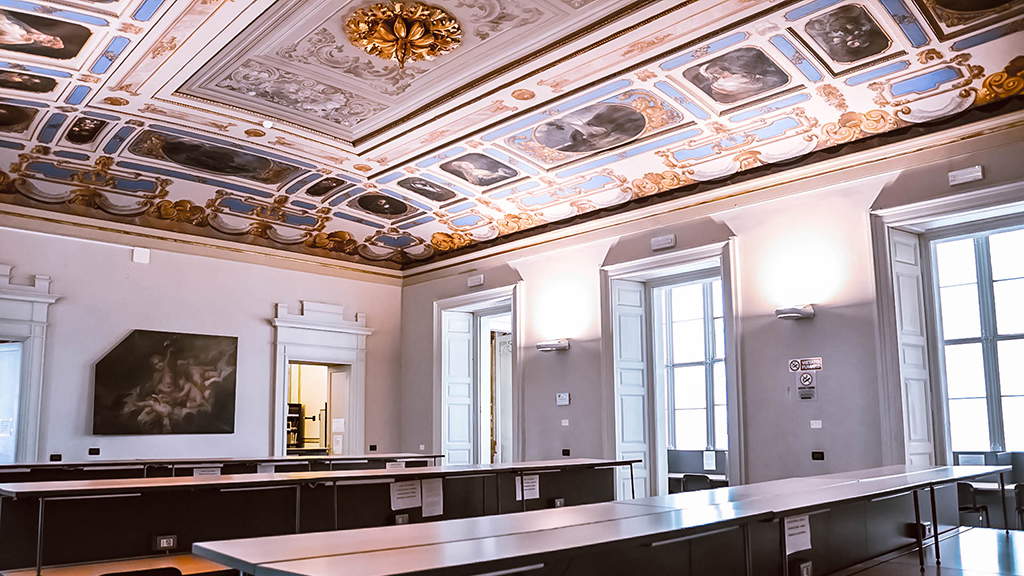
Warning: the translation into English of the original Italian article was created using automatic tools. We undertake to review all articles, but we do not guarantee the total absence of inaccuracies in the translation due to the program. You can find the original by clicking on the ITA button. If you find any mistake,please contact us.




























